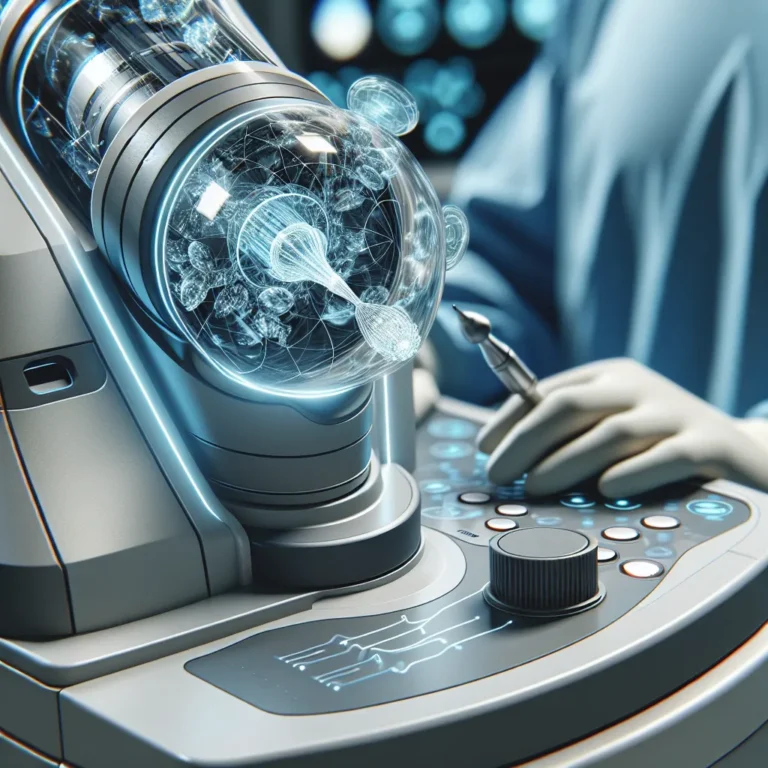
One of the hottest makeup trends for this fall is the emphasis on bold lip colors, ranging from deep plums to vibrant reds and even daring blues, all designed to make a statement. To complement these dramatic shades, a flawless complexion is essential, and a good quality compact powder can help set makeup, control shine, and provide a smooth, matte finish. Additionally, the revamped smoky eye with a modern twist is another must-try trend, featuring unexpected color combinations, shimmer, and emphasis on blending and diffusing edges for a soft, hazy effect. This season's approach to the timeless smoky eye involves innovative techniques and "smoky eyes with a statement," offering endless possibilities for experimentation. Furthermore, achieving glowing skin through highlighting and contouring is another key trend for fall, providing an opportunity to embrace the season's innovative techniques and make a statement with captivating looks.

The article "Enhance Your Makeup Game with These Expert Tips" provides valuable insights into enhancing makeup application. It emphasizes the use of face primers for a smooth base and prolonged wear of makeup. The expert tips cover essential practices such as skin preparation, investing in quality tools, finding the perfect foundation match, mastering blending techniques, and applying eyeliner. By incorporating these tips, readers can elevate their makeup game and achieve professional-looking results. The article also highlights the importance of quality makeup products tailored to individual skin types and tones. Overall, this comprehensive guide aims to empower readers with the knowledge and techniques to master the art of makeup application for a flawless finish.

The article "Achieving a Flawless Finish: The Top Makeup Cosmetics to Try" discusses the importance of choosing the right cosmetics to achieve a seamless and long-lasting makeup look. It highlights the significance of using products such as primer, foundation, setting powder, setting spray, and application tools in creating a flawless finish. The article emphasizes the role of each cosmetic in the makeup routine, from providing a smooth base with primer to setting the makeup with a translucent powder. It also offers insights into different products, such as bronzer, and their ability to add warmth and definition to the face. By carefully selecting the right cosmetics and applying them skillfully, readers can achieve a flawless makeup look that lasts all day. If you're looking to elevate your makeup game and discover the top products to achieve a flawless finish, this article provides a comprehensive guide to help you master the art of makeup application.

The article "Comparing Monitoring Approaches: A Comprehensive Review" provides a thorough evaluation of various monitoring methods, emphasizing the importance of aligning the chosen approach with specific organizational needs. It highlights key aspects such as cost-effectiveness, scalability, reliability, and real-time insights, offering insights into how different approaches utilize cutting-edge technologies. The review further delves into industry-specific requirements, offering a holistic understanding of monitoring landscapes across different sectors. Additionally, the article discusses the advantages and disadvantages of network-based, host-based, and application-based monitoring methods, underscoring the necessity of combining approaches to effectively address diverse operational demands. This comprehensive resource equips decision-makers and practitioners with the knowledge to optimize monitoring solutions, making it a valuable read for those seeking insights into the array of monitoring options available.

The article discusses the importance of optimizing sensor placement to enhance data collection efficiency across diverse industries such as environmental monitoring, infrastructure management, and industrial automation. It emphasizes the need to strategically position sensors to maximize the quality and quantity of data acquired, enabling more informed decision-making and improved operational performance. Furthermore, the integration of machine learning algorithms and predictive analytics, along with the use of wireless sensor networks, has streamlined the process, making it crucial in unlocking valuable insights and driving efficiencies. The second part of the article focuses on maximizing data acquisition through strategic sensor deployment, highlighting the use of advanced algorithms and modeling techniques to determine the most effective sensor placement. It also emphasizes aligning the placement of sensors with specific data collection objectives and considering environmental conditions, power supply, and connectivity for effective sensor operation and data transmission. Overall, the article effectively conveys the importance of optimized sensor placement and strategic sensor deployment in unlocking valuable insights, improving decision-making, and gaining a competitive advantage in various industries.

The article "Examining the Ethical Implications of Covert Observation in Research" delves into the ethical considerations surrounding covert observation in research. It highlights the potential value of covert observation in capturing natural behaviors but also underscores the ethical concerns related to privacy, autonomy, and informed consent of the subjects. The article emphasizes the need for researchers to carefully balance the pursuit of knowledge with the respect for individuals' rights and well-being. It discusses the potential harm to subjects and the essentiality of transparency and respect for the individuals involved. Additionally, the article touches on the central ethical challenge of ensuring informed consent and the responsibility of researchers to critically evaluate the ethical implications of covert observation. "Navigating the Moral Dilemmas of Covert Observation in Research," the companion article, explores the moral and ethical concerns entailed in the use of covert observation. It stresses the importance of considering the principles of respect for persons, beneficence, and justice, and advocates for researchers to minimize intrusion and weigh the potential benefits against the risks. Overall, both articles highlight the complexities and ethical dilemmas associated with covert observation, urging readers to carefully consider the ethical implications and engage in responsible research practices.

Understanding the need for counter-surveillance in today's digital age is paramount, as pervasive surveillance technology poses significant threats to privacy and data security. The article emphasizes the importance of recognizing the diverse forms of surveillance and the implications of unchecked surveillance on personal freedoms and information integrity. It stresses the imperative for individuals and organizations to adopt comprehensive counter-surveillance measures to safeguard privacy and data in the face of advancing surveillance technologies. Furthermore, the article underscores the significance of employing encryption technologies, practicing good cybersecurity hygiene, and being mindful of online data sharing as essential techniques for protecting digital privacy in the modern era. It highlights the crucial role of encryption in counter-surveillance to prevent unauthorized access to sensitive information and underscores the importance of staying informed and proactive in mitigating the risks posed by pervasive surveillance.

The article "Revolutionizing Disease Detection: The Latest Breakthroughs in Early Diagnosis" delves into the recent advancements in early disease detection, emphasizing the impact on healthcare outcomes and patient well-being. It highlights the development of liquid biopsy technology, the integration of artificial intelligence in diagnostic processes, and the use of advanced imaging modalities as key breakthroughs in disease detection, offering more precise and less invasive diagnostic alternatives. The article emphasizes the potential of these innovations in revolutionizing disease prevention and improving patient outcomes, providing valuable insights for healthcare professionals and individuals interested in the latest developments in early diagnosis and precision medicine.

The article delves into the ethical implications of mass surveillance and its impact on civil liberties, shedding light on the debate between security and privacy. Advocates argue that mass surveillance is crucial for national security, while critics express concerns about potential violations of privacy and freedom. The intrusion into personal lives and the risk of data abuse are highlighted as critical issues. Ultimately, the article concludes by emphasizing the complexity of balancing security and privacy concerns, urging readers to consider the ethical dilemmas posed by mass surveillance.

The article emphasizes the critical importance of encryption in safeguarding online privacy. It highlights encryption as a vital tool in securing communications and data, making them unreadable to unauthorized parties. The role of encryption extends beyond communication security, encompassing the protection of stored data from cyber-attacks and breaches. Furthermore, it underlines the significance of encryption in upholding privacy rights and countering unwarranted surveillance. The article encourages readers to leverage encryption technologies to fortify their privacy, assert control over their online data, and implement effective strategies for safeguarding personal information. It also emphasizes the importance of staying informed about surveillance technologies and privacy best practices in the digital age. With its comprehensive coverage and actionable insights, the article provides compelling reasons for readers to delve deeper into the full content.









